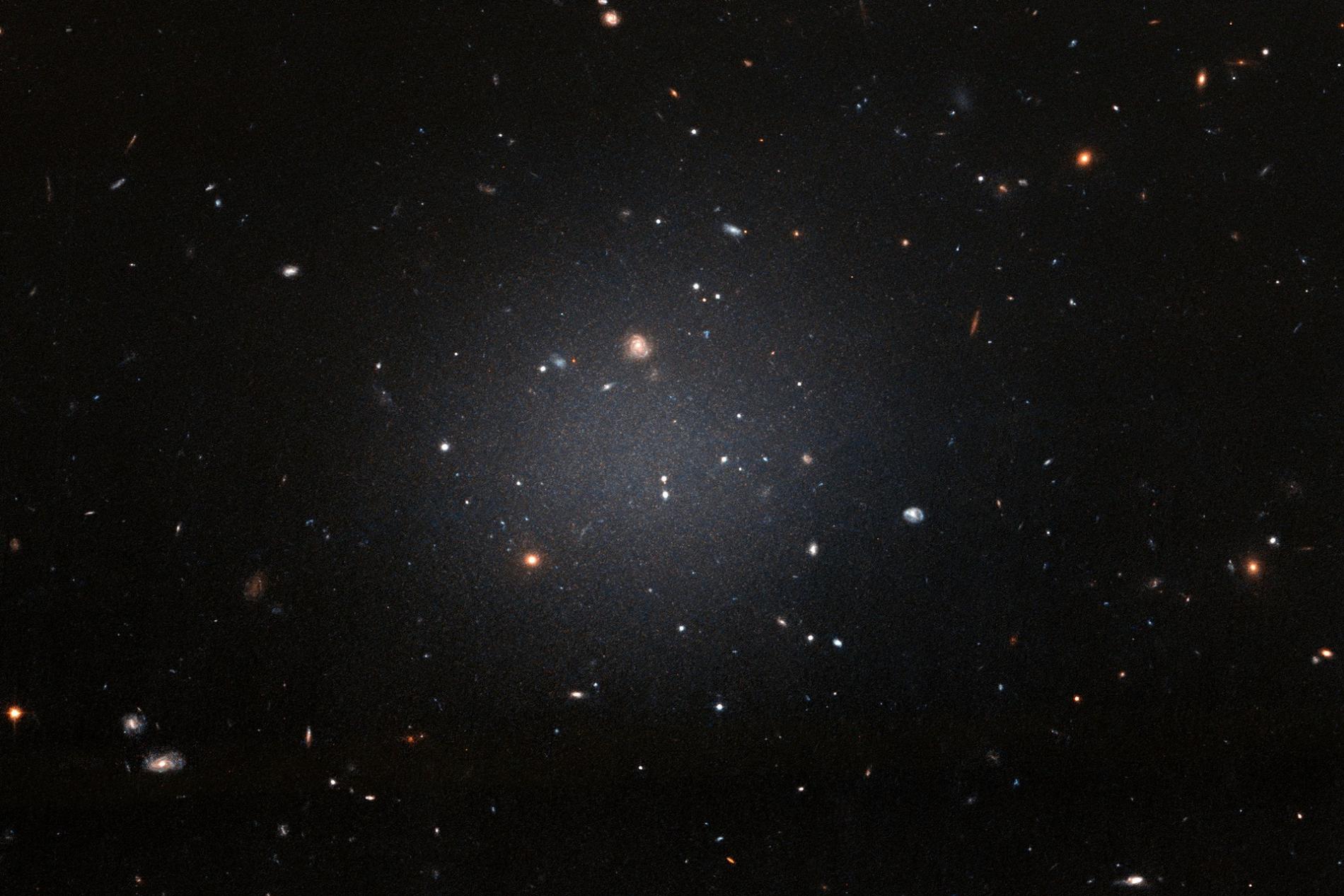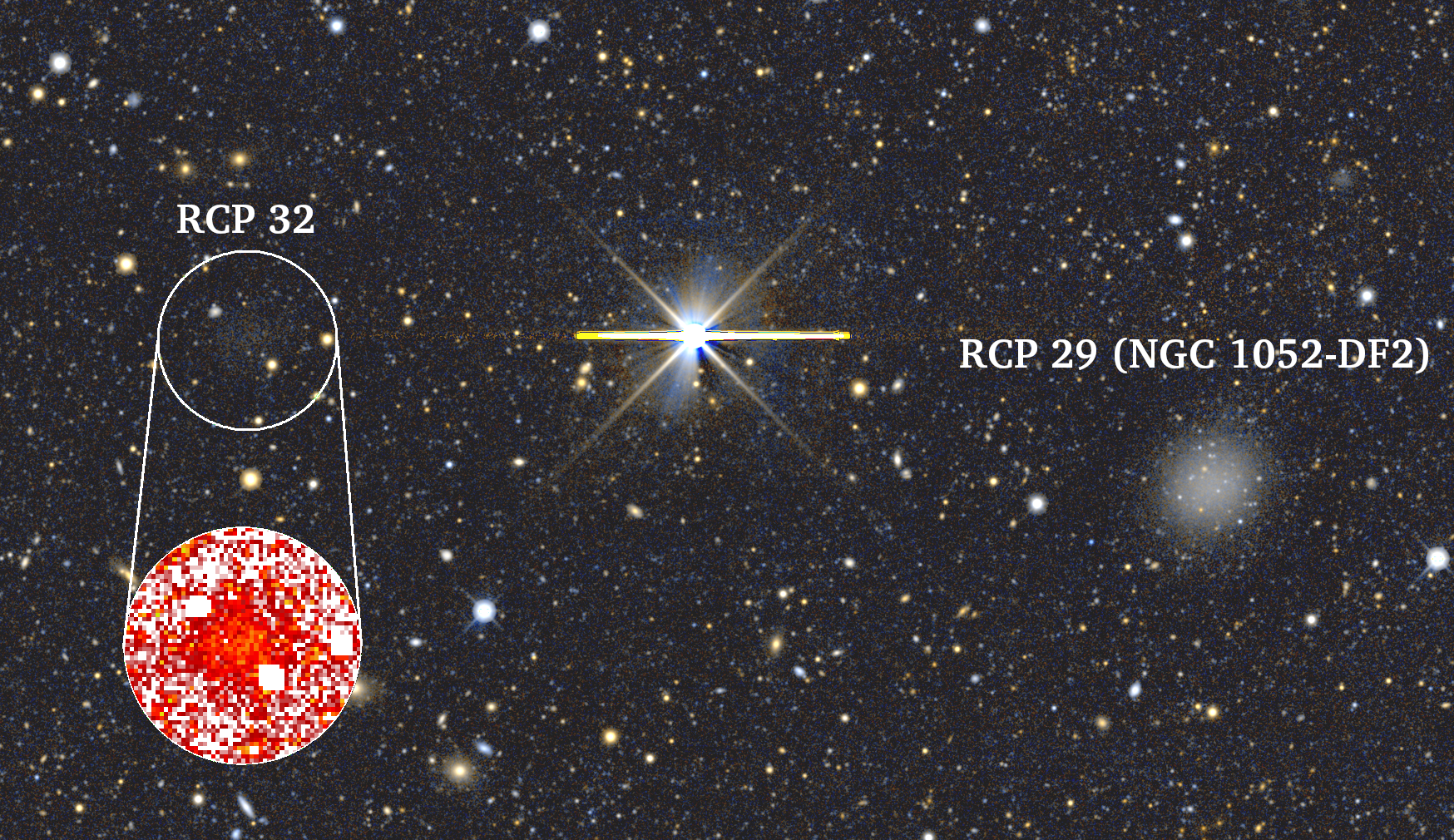New perspectives on the problem of galaxies without dark matter
The discovery of numerous very low surface brightness galaxies in the environment of NGC 1052 provides a crucial clue to the debate about the lack of dark matter in some galaxies of this group. The new data points to the existence of a group of galaxies closer than NGC 1052, to which these anomalous galaxies would belong, and the proximity would solve the problem
Something strange happens in the environment of the galaxy NGC 1052: several very faint galaxies have been found that apparently lack dark matter. Galactic formation models establish that dark matter -a type of matter that does not emit light and only interacts gravitationally- was the seed of the galaxies we observe today, so this anomaly was a problem. Now, a scientific group headed by the Andalusian Institute of Astrophysics (IAA-CSIC) has found new evidence that it is actually a distance measurement problem: these galaxies could be closer to us, so that their estimated stellar mass would be lower and, therefore, its dark matter content would be within normal parameters.
According to the most widely accepted cosmological theory, before galaxies were formed there were already concentrations of dark matter that served as binder: the gas that would give rise to the stars of the first galaxies was concentrated in the clumps of dark matter, and this type of matter is still in the majority in galaxies, in the form of huge halos around luminous matter. In fact, it constitutes their "glue": one of the evidences of the existence of dark matter is that, if galaxies were only made up of stars and gas, the gravitational force would be insufficient to explain their dynamics, so that they would be easily disaggregated over time.
For example, in the environment of NGC 1052, located about 63 million light years, the mass in the form of stars usually represents about 1% of that of dark matter. But some galaxies, like the one known as NGC 1052-DF2, show the opposite proportions, with an anomalously low percentage of dark matter. This galaxy, much more diffuse than our Milky Way, shows a swarm of old and extremely scattered stars, which in the absence of dark matter would be easily disturbed. It is, therefore, difficult to explain how it has been able to form and survive throughout cosmic time.

"Thanks to data from the Dark Energy Camera Legacy Survey, together with our own techniques for detecting extremely low-brightness objects, we have carried out a systematic exploration in this region. And we have found a large number of galaxies with low surface brightness that had not been observed, including some of the fainter galaxies detected so far", points out Javier Román, a researcher at the Institute of Astrophysics of Andalusia (IAA-CSIC) who is leading the work.
The analysis of these new and extremely faint galaxies, as well as the environment in which they are found, provides robust evidence of the existence of a group of galaxies closer than NGC 1052, to which these galaxies with no apparent dark matter would belong. "Being much closer to us, the estimated stellar mass in these galaxies would decrease considerably, which would make these galaxies become normal ones, with ordinary proportions of both types of matter", indicates Javier Román (IAA-CSIC).
In addition, this greater proximity would solve another of the anomalies of these galaxies: some of their globular clusters, or very compact groupings of old stars, showed a much higher luminosity than expected. If, indeed, they are closer together, their luminosity also falls within the normal parameters.
This research has also made it possible to discover a galaxy of great interest. Known as RCP 32, it is one of the galaxies with the lowest observed surface brightness, and its detection is a sign of the efficiency of the method used. "It is striking that it went unnoticed being next to NGC 1052-DF2, which has been so extensively studied in recent years. It shows properties similar to those of galaxies that seemed to lack dark matter, but we see without a doubt that dark matter is an indispensable ingredient in RCP 32, since without it its very scarce stellar population would disintegrate very quickly. Future studies of this galaxy will be of great interest", concludes Javier Román (IAA-CSIC).

J. Román et al. "Discovery and analysis of low surface brightness galaxies in the environment of NGC 1052". Astronomy & Astrophysics, October 2021. https://www.aanda.org/10.1051/0004-6361/202142161
Instituto de Astrofísica de Andalucía (IAA-CSIC)
Unidad de Divulgación y Comunicación
Silbia López de Lacalle - sll[arroba]iaa.es - 958230676
https://www.iaa.csic.es
https://divulgacion.iaa.csic.es

